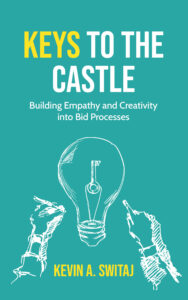Blog
Oct 20, 2022
Proposals are a detailed-oriented project. With all the moving pieces at each stage, proposal professionals need a clear, focused way to ensure nothing slips through the cracks.
The easiest tool to ensure we account for each action throughout the lifecycle is a checklist. Much like our compliance matrices help us ensure we meet all the requirements, a proposal checklist provides us with an easy, repeatable way to run a smooth, successful proposal effort. In this post, I discuss how we can use checklists to ensure compliance and completeness across the proposal schedule.
First, some ground rules. We should be using these checklists on every bid, no matter how small. Yes, some of the points may not be relevant, but they should still be reviewed and accounted for. Secondly, these checklists should be stored in a central, accessible repository. This allows all proposal personnel to access them and to have the same format across all our bids. This ensures we breed familiarity with our approach both internally and within our larger organization. Third, we should keep completed versions of the checklists, either hard or soft copy, that shows we completed each step. A blank checklist is useless. Finally, we should take time at least once a quarter to review the checklists to ensure they are still relevant and capture the information needed.
There are three checklists I discuss below are those I have had the most success with and find the most useful. They cover the three most important aspects of proposal development – the start, the review, and the finish.
 Proposal Planning Checklist. When we receive a proposal solicitation and get the go ahead to bid, there are a lot of activities, large and small, that need to be done in a short amount of time. I have a set checklist that I leverage to make sure I have full accountability into all the tasks. While I may not need each for every proposal effort (especially short-turn efforts), it helps to have the tasks all listed. For this list, I include:
Proposal Planning Checklist. When we receive a proposal solicitation and get the go ahead to bid, there are a lot of activities, large and small, that need to be done in a short amount of time. I have a set checklist that I leverage to make sure I have full accountability into all the tasks. While I may not need each for every proposal effort (especially short-turn efforts), it helps to have the tasks all listed. For this list, I include:
Proposal Review Checklist. Proposal reviews provide critical insight and feedback on our bids. They allow us to improve what we say and how we say it through having outside individuals give our work a independent look. To ensure our reviews are productive, we need to make sure we follow some basic steps. For each color team, your list should be slightly different. For example, you may not do a full technical edit for a Pink Team document but should definitely do one at Gold Team. However, some basic steps need to be included and incorporated into the review checklist:
 Proposal Submission Checklist. When it comes time to submit our proposal, there can be a lot of moving pieces we are responsible for. This is especially true when we are rushing at the end, either due to an abbreviated timeline or due to delays in the process. As proposal professionals, we pride ourselves on delivering compliant, complete proposals. Therefore, we need to make sure we account for all submission requirements. This checklist should include:
Proposal Submission Checklist. When it comes time to submit our proposal, there can be a lot of moving pieces we are responsible for. This is especially true when we are rushing at the end, either due to an abbreviated timeline or due to delays in the process. As proposal professionals, we pride ourselves on delivering compliant, complete proposals. Therefore, we need to make sure we account for all submission requirements. This checklist should include:
Conclusion. Having a checklist for various stages in the proposal cycle ensures we remain compliant with requirements and align to industry best practices, as defined by APMP. Implementation and regular use of standardized checklists minimizes risk throughout the lifecycle and enables teams to focus on remembering messaging instead of mundane details.
_______________
 Check out our latest book, Keys to the Castle: Building Empathy and Creativity into Bid Processes, to learn how to make your proposals stand out from the crowd. It’s available on Kindle and in paperback now – click here to get your copy today!
Check out our latest book, Keys to the Castle: Building Empathy and Creativity into Bid Processes, to learn how to make your proposals stand out from the crowd. It’s available on Kindle and in paperback now – click here to get your copy today!